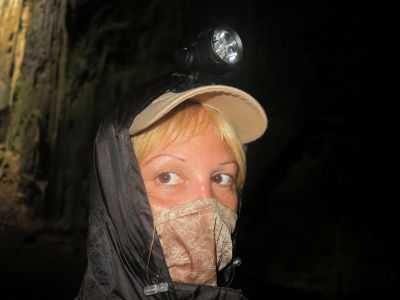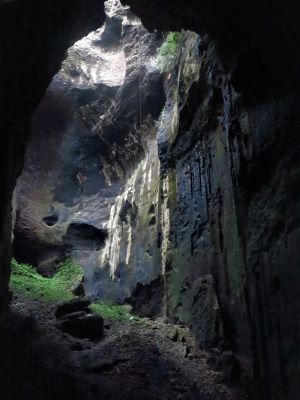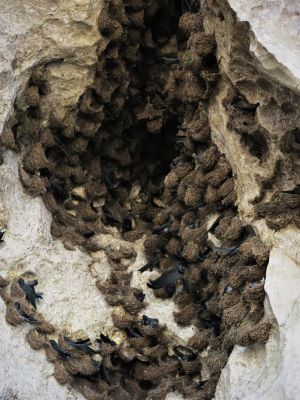I was in the Sabah province, in the far north of Borneo, heading from the Kinabatangan river valley to my next destination, the Danum Reservation. After unforgettable encounters with elephants and orangutans, the time had come for a completely different experience: a descent into the bowels of the earth, into the famous Gomantong Cave.
In the darkness of that cave, a unique ecosystem had developed.

Though I hadn’t even gotten close to the entrance, I was struck by an infernal stench. I had equipped myself with a scarf soaked in scented oils to make the experience more bearable, but even so, the surrounding miasma was so heavy that it simply took over the sense of smell. The journey inside was not meant to take more than twenty minutes, but in that place, it seemed like an eternity.
Hundreds of thousands of bats resided on the tall ceilings of the cave, under the arched walls, as in some kind of dark and sinister Gothic cathedral. At nightfall, they were all coming out in search for food, and their sudden massive exodus transformed them into a terrifying, fast-moving black cloud.
The cave floor was a quicksand of cockroaches, scorpions, and centipedes, which, together with snakes and mice, were thriving in an ever-thickening layer of guano. It made little difference that I was walking on a wooden platform, erected above the ground – it was as full of droppings and little beasts as everything else around. Instead of air, I was breathing a stinging poisonous gas, which might as well have asphyxiated me if it hadn’t been for some holes in the stone ceiling, which allowed a little bit of oxygen inside. I couldn’t even find the stamina to stop for pictures. I only took two or three, while rushing out, because every extra second in that place felt like pure torture.

As if all this hadn’t been enough, the heat was stifling, while the humidity – heavy by default in the equatorial realm – was liquefying. I was doomed to boil in that inhuman atmosphere, all covered-up, wearing long trousers, an airtight hooded jacket and a sunhat to shelter my face. The clothing was my only protection against the bat guano permanently dripping from the cave ceiling and against the various bugs climbing on my feet. The cave was so densely populated that it was impossible to escape untouched.
The walls were filled with countless bird nests, built one below the other, like rows of miniature balconies. Those nests were made of nothing else than the saliva of their occupants. Much more than for the small birds that made them, the little “balconies” were invaluable to humans, who, every day, would spend hours inside the cave gathering them up. Many people had settled in the vicinity of Gomantong Cave specifically for that purpose. The bird nests counted as a delicacy in Chinese cuisine, where they were consumed in the form of soup. They were thought to be beneficial to the immune system, as well as the lungs and skin. For that reason, they were being sold at exorbitant prices, reaching thousands of dollars a pound.

As far as I was concerned, the thought of something edible growing in that pestilential place only pushed my nausea closer to the peak. Despite the wide-open spaces inside the cave, the unbreathable air had induced me a claustrophobic state, so I walked the last part of the trail on the brink of fainting.
I’ve never felt more grateful for a breath of fresh air, like when I got out of there. Curiosity had pushed me to see the filthiest place in the natural world, as it had been previously described to me by a guide. And it has proved to be, by far, the most disgusting place I have ever been.